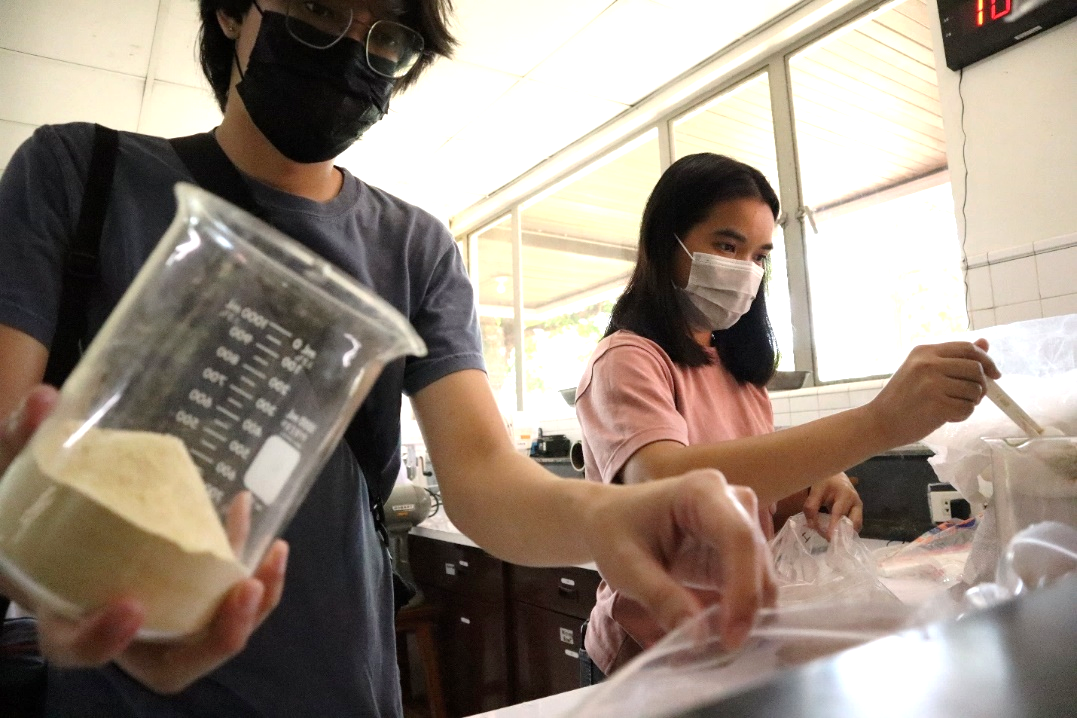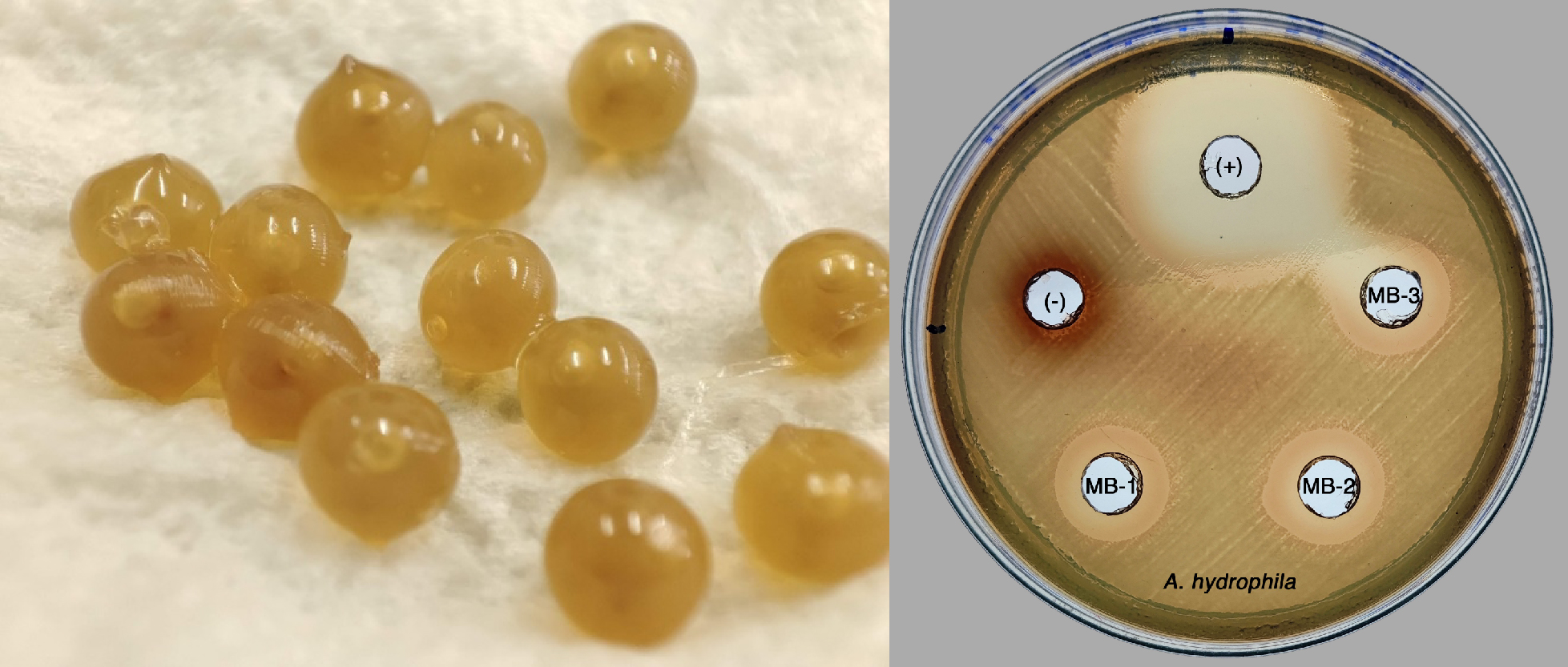As aquatic animals are continuously being exposed to diseases resulting in increased mortality rates and declined productivity and financial gains, probiotics pose a potential as a promising solution.
Countries like the European Union totally banned antibiotics in aquaculture farming due to its possible significant contribution to increased bacterial antibiotic resistance and food safety issues. Accordingly, probiotics are being fully explored to serve as alternatives to antibiotics.
However, even with the recognized potential of probiotics, challenges persist especially in their commercial production. Commercially available probiotic products are formulated in powder or liquid forms. When applied, these products are highly affected by adverse environmental conditions such as water temperature, pH level, and salinity, which could possibly harm microorganisms and minimize host functionality.

Formulation and preparation of feeds for tilapia and milkfish experimental trials. (Image credit: UPLB Project Team)
Addressing these concerns, researchers from the University of the Philippines Los Baños (UPLB) developed an alginate-based probiotic called MicroBead™. This technology offers an advantage over commercially available probiotic products as it can strengthen functionality through an efficient delivery system of probiotics with controlled release to its target site.
This is made possible through the project, “MicroBead™ Technology: Enhancing Fish Gut Nutrition through Efficient Delivery System and Functionality of Microencapsulated Probiotics for Aquaculture.” The project aims to enhance the overall efficacy of probiotics in aquaculture and contribute to sustainable aquaculture development. It is funded by the Philippine Council for Agriculture, Aquatic and Natural Resources Research and Development of the Department of Science and Technology (DOST-PCAARRD).
Contrary to the commercially available products, MicroBead™ technology provides a protective shield against harsh conditions of the environment. It improves the shelf-life of probiotics through barrier action against oxidation and other impacting factors.
The project conducted a comparative analysis of the in vitro release during simulated gastrointestinal digestion of probiotics from two forms: the MicroBead™ and a commercially available non-encapsulated probiotic product. Results showed that the non-encapsulated commercial product released 58% of its probiotics before reaching the gastrointestinal tract, while only 3% of probiotics were released from the MicroBead™. With this, the project noted that this indicates a matrix-mediated controlled release mechanism that sets it apart from the commercial product.

MicroBeadTM (left) and antibacterial property of MicroBeadTM probiotics against Aeromonas hydrophila. (Image credit: UPLB Project Team)
This underscores the distinctive feature of MicroBead™ compared with commercial products. The controlled release mechanism and the MicroBead™’s swelling properties suggest that it may offer a more targeted and efficient delivery of probiotics in the gastrointestinal tract, with probiotics being released in the intestine can exert their beneficial effects.
Aside from its dynamic swelling behavior leading to the controlled-release mechanism within the gastrointestinal tract, MicroBead™ also showed functionality in eliciting antibacterial properties against common bacterial pathogens. Scientific investigations have demonstrated that tilapia fed with MicroBead™ markedly elevated disease resistance when challenged with bacterial pathogens such as Streptococcus agalactiae. This explains the pivotal role of probiotics in strengthening host immune responses and modulating gut microbiota. Furthermore, MicroBead™ serves as a sustainable alternative to antibiotics in aquaculture that mitigates environmental concerns associated with antibiotic use, while ensuring high-quality production of pathogen-resistant fish stocks.
The increasing recognition of probiotics and their development can intensify aquaculture farming to create a higher-quality aquaculture product. Further, it serves as a key management tool for the efficient delivery of functional probiotics in improving gut health and environment quality. MicroBead™ technology has the potential for commercialization and local value addition because it can be formulated, developed, and mass-produced, possibly contributing to the development of aquaculture farming.

